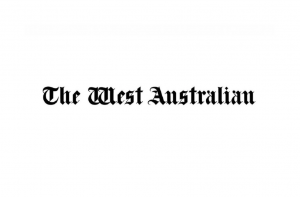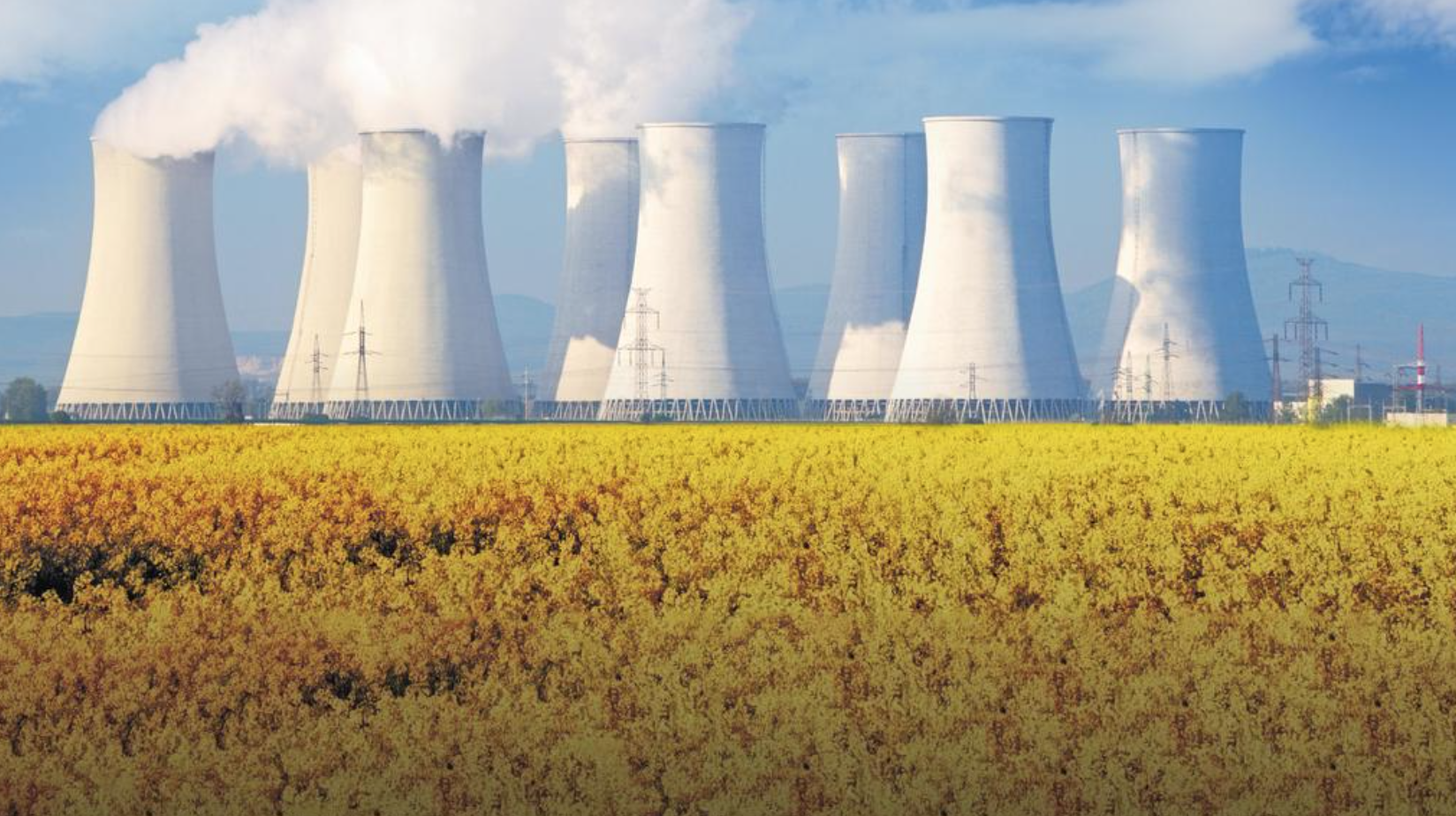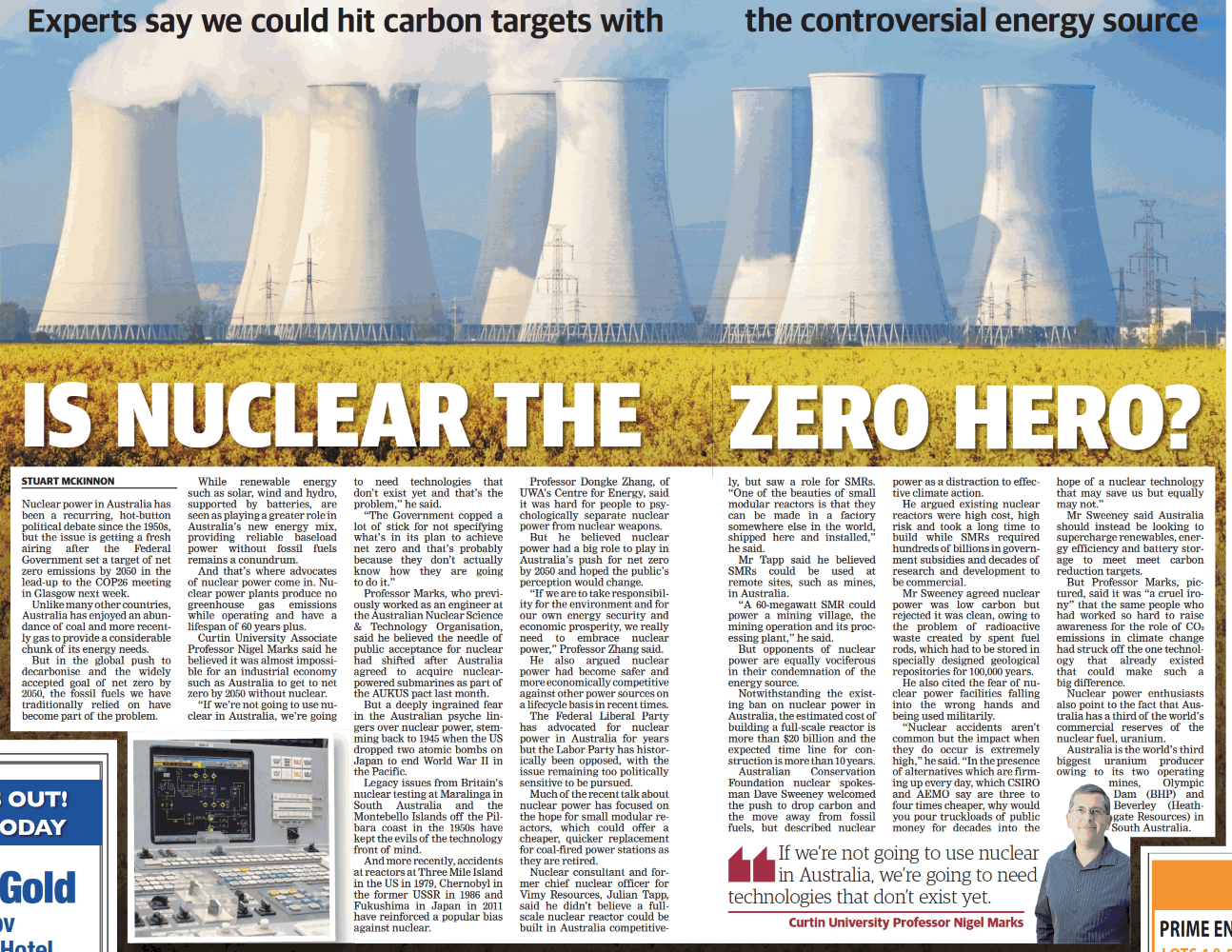Article by Stuart McKinnon courtesy of the West Australian.


Experts say we could hit carbon targets with the controversial energy source Nuclear power in Australia has been a recurring, hot-button political debate since the 1950s, but the issue is getting a fresh airing after the Federal Government set a target of net zero emissions by 2050 in the lead-up to the COP26 meeting in Glasgow next week.
Unlike many other countries, Australia has enjoyed an abundance of coal and more recently gas to provide a considerable chunk of its energy needs. But in the global push to decarbonise and the widely accepted goal of net zero by 2050, the fossil fuels we have traditionally relied on have become part of the problem.
While renewable energy such as solar, wind and hydro, supported by batteries, are seen as playing a greater role in Australia’s new energy mix, providing reliable baseload power without fossil fuels remains a conundrum.
And that’s where advocates of nuclear power come in. Nuclear power plants produce no greenhouse gas emissions while operating and have a lifespan of 60 years plus. Curtin University Associate Professor Nigel Marks said he believed it was almost impossible for an industrial economy such as Australia to get to net zero by 2050 without nuclear.
“If we’re not going to use nuclear in Australia, we’re going to need technologies that don’t exist yet and that’s the problem,” he said. “The Government copped a lot of stick for not specifying what’s in its plan to achieve net zero and that’s probably because they don’t actually know how they are going to do it.”
Professor Marks, who previously worked as an engineer at the Australian Nuclear Science & Technology Organisation, said he believed the needle of public acceptance for nuclear had shifted after Australia agreed to acquire nuclearpowered submarines as part of the AUKUS pact last month.
But a deeply ingrained fear in the Australian psyche lingers over nuclear power, stemming back to 1945 when the US dropped two atomic bombs on Japan to end World War II in the Pacific. Legacy issues from Britain’s nuclear testing at Maralinga in South Australia and the Montebello Islands off the Pilbara coast in the 1950s have kept the evils of the technology front of mind.
And more recently, accidents at reactors at Three Mile Island in the US in 1979, Chernobyl in the former USSR in 1986 and Fukushima in Japan in 2011 have reinforced a popular bias against nuclear. Professor Dongke Zhang, of UWA’s Centre for Energy, said it was hard for people to psychologically separate nuclear power from nuclear weapons.
But he believed nuclear power had a big role to play in Australia’s push for net zero by 2050 and hoped the public’s perception would change. “If we are to take responsibility for the environment and for our own energy security and economic prosperity, we really need to embrace nuclear power,” Professor Zhang said.
He also argued nuclear power had become safer and more economically competitive against other power sources on a lifecycle basis in recent times. The Federal Liberal Party has advocated for nuclear power in Australia for years but the Labor Party has historically been opposed, with the issue remaining too politically sensitive to be pursued.
Much of the recent talk about nuclear power has focused on the hope for small modular reactors , which could offer a cheaper, quicker replacement for coal-fired power stations as they are retired. Nuclear consultant and former chief nuclear officer for Vimy Resources, Julian Tapp, said he didn’t believe a fullscale nuclear reactor could be built in Australia competitively , but saw a role for SMRs.
“One of the beauties of small modular reactors is that they can be made in a factory somewhere else in the world, shipped here and installed,” he said. Mr Tapp said he believed SMRs could be used at remote sites, such as mines, in Australia. “A 60-megawatt SMR could power a mining village, the mining operation and its processing plant,” he said.
But opponents of nuclear power are equally vociferous in their condemnation of the energy source. Notwithstanding the existing ban on nuclear power in Australia, the estimated cost of building a full-scale reactor is more than $20 billion and the expected time line for construction is more than 10 years.
Australian Conservation Foundation nuclear spokesman Dave Sweeney welcomed the push to drop carbon and the move away from fossil fuels, but described nuclear power as a distraction to effective climate action. He argued existing nuclear reactors were high cost, high risk and took a long time to build while SMRs required hundreds of billions in government subsidies and decades of research and development to be commercial.
Mr Sweeney agreed nuclear power was low carbon but rejected it was clean, owing to the problem of radioactive waste created by spent fuel rods, which had to be stored in specially designed geological repositories for 100,000 years.
He also cited the fear of nuclear power facilities falling into the wrong hands and being used militarily. “Nuclear accidents aren’t common but the impact when they do occur is extremely high,” he said.
“In the presence of alternatives which are firming up every day, which CSIRO and AEMO say are three to four times cheaper, why would you pour truckloads of public money for decades into the hope of a nuclear technology that may save us but equally may not.” Mr Sweeney said Australia should instead be looking to supercharge renewables, energy efficiency and battery storage to meet meet carbon reduction targets.
But Professor Marks, said it was “a cruel irony” that the same people who had worked so hard to raise awareness for the role of CO2 emissions in climate change had struck off the one technology that already existed that could make such a big difference. Nuclear power enthusiasts also point to the fact that Australia has a third of the world’s commercial reserves of the nuclear fuel, uranium. Australia is the world’s third biggest uranium producer owing to its two operating mines, Olympic Dam (BHP) and Beverley (Heathgate Resources) in South Australia.

